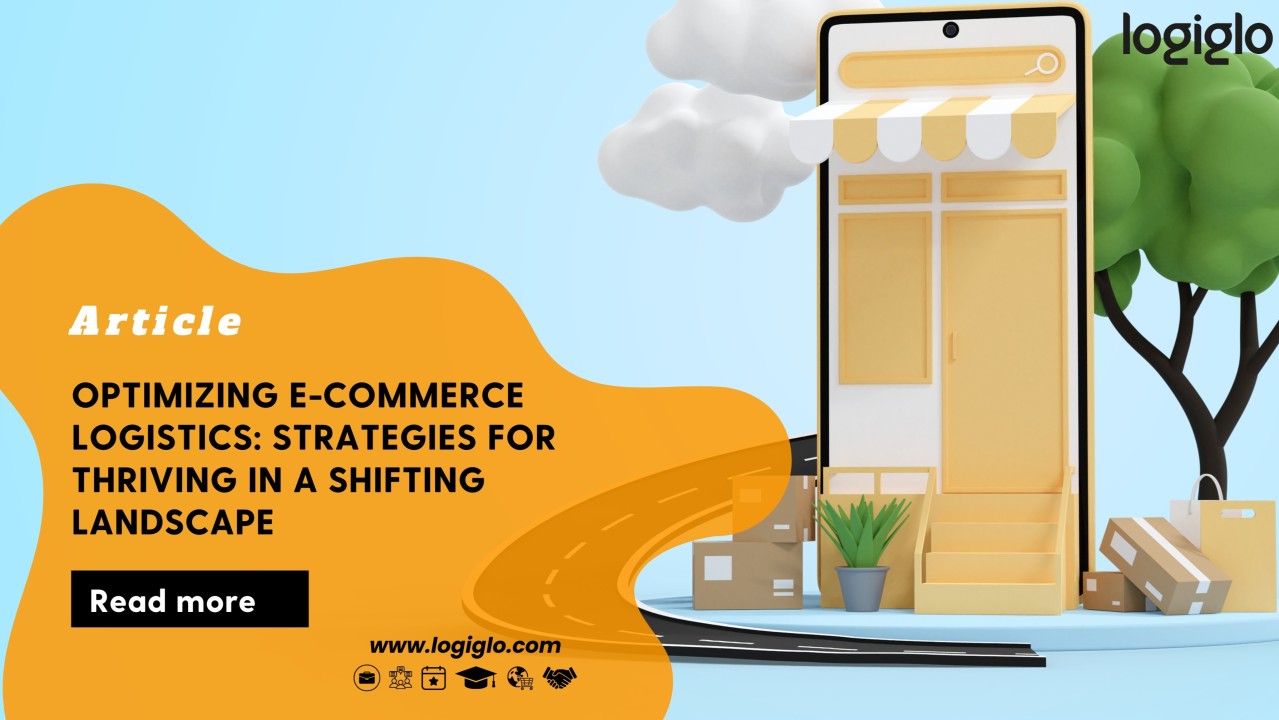
Optimizing E-Commerce Logistics: Strategies for Thriving in a Shifting Landscape
Sai Pothuri
Global Logistics and Supply Chain Leader | Strategy Development, Collaboration, Community Building | I Help Companies Enhance Security and Boost Collaboration Worldwide
Over the last few years, e-commerce has transformed at an unprecedented pace. Once fueled by pandemic-driven demand, the sector grew at an explosive rate of 18% annually. Today, this growth has stabilized to around 8.8%, presenting new challenges and opportunities for retailers to adapt to a shifting landscape.
The aftermath of the pandemic, combined with inflationary pressures, has reshaped how logistics and shipping operate. Consumers continue to demand fast, reliable, and affordable shipping, while retailers face mounting challenges like rising costs, labor shortages, and increasingly complex logistics. To thrive in this environment, businesses must refine their strategies, leveraging data, technology, and customer-centric practices to align with evolving expectations.
Understanding What Matters to Customers
To succeed, businesses need to understand the priorities of modern consumers. Recent studies highlight key delivery factors that influence purchasing decisions: speed, cost, reliability, and convenience. While fast delivery remains important, it’s no longer the sole driver of customer satisfaction.
For instance, delivery costs play a significant role in whether a consumer completes a purchase. A significant number of online shoppers abandon their carts when faced with high shipping fees. Conversely, many consumers are willing to wait slightly longer for their orders if it means avoiding steep delivery costs. This reveals a key opportunity for retailers to balance delivery speed with affordability, offering free or reduced shipping as part of a broader strategy to improve conversion rates and drive sales.
At the same time, clear and accurate delivery windows, along with reliable package handling, build trust and loyalty. Consumers value knowing when their orders will arrive and having confidence in the quality of service they receive.
Beyond Speed and Cost: Delivering Convenience
Today’s e-commerce customers are looking for a seamless, transparent delivery experience that offers control and convenience. Flexible delivery options, such as scheduled drop-offs or alternative pick-up locations, can differentiate a business from its competitors. Similarly, streamlined returns processes — including pick-up services — add significant value for customers who prioritize ease and efficiency.
These features demonstrate attentiveness to consumer needs, fostering goodwill and repeat business. Studies show that a positive delivery experience can drive up to a 19% increase in repeat purchases and enhance brand loyalty. On the other hand, poor delivery experiences can have a lasting negative impact, with many consumers hesitant to shop again with a retailer after encountering issues.
Leveraging Technology for a Better Customer Experience
Technology is a game-changer for logistics in e-commerce, offering tools to improve efficiency and meet rising customer expectations. Real-time tracking and proactive communication are especially critical, as they provide visibility and assurance to customers waiting for their orders. While many brands recognize the importance of these features, fewer have fully implemented them into their operations.
Investing in robust technology platforms allows businesses to provide real-time updates, minimize errors, and address customer concerns proactively. For instance, data analytics can uncover valuable insights into consumer behavior, helping retailers tailor their shipping strategies to better align with customer preferences.
领英推荐
Artificial intelligence (AI) and machine learning (ML) further enhance logistics by optimizing delivery routes, predicting demand, and automating key processes. These tools reduce costs while improving operational efficiency, making them essential for staying competitive in a rapidly evolving market.
Balancing Profitability and Customer Satisfaction
Retailers must find ways to meet customer expectations while managing costs effectively. Offering free or low-cost shipping can be a powerful incentive, but it’s essential to evaluate the financial impact of such programs. By analyzing data on delivery times, customer preferences, and operational costs, businesses can identify opportunities to streamline processes and maintain profitability.
Efforts to optimize logistics can also reduce expenses tied to customer service, such as the cost of replacing lost or damaged packages. Proactive measures like secure packaging and enhanced tracking systems can minimize these issues, saving money while boosting customer satisfaction.
Embracing Sustainability
Sustainability is becoming an integral part of logistics, as consumers increasingly favor brands that demonstrate environmental responsibility. Optimizing shipping practices to reduce waste, adopt eco-friendly packaging, and explore alternative delivery methods can enhance a retailer’s reputation and appeal.
Sustainable practices don’t just align with consumer values — they also offer long-term cost savings and operational benefits. For example, implementing energy-efficient technologies in warehouses or consolidating shipments to reduce transportation emissions can positively impact both the environment and the bottom line.
Preparing for the Future
The e-commerce sector will continue to evolve, bringing new challenges and opportunities. Brands that remain agile, invest in technology, and listen to their customers’ needs will be best positioned to succeed.
By prioritizing reliability, transparency, and convenience, businesses can deliver exceptional customer experiences that drive loyalty and long-term growth. At the same time, embracing sustainability and leveraging data-driven strategies will ensure that logistics operations are both efficient and future-proof.
As the e-commerce landscape shifts, businesses that proactively adapt their logistics strategies won’t just survive — they’ll thrive.